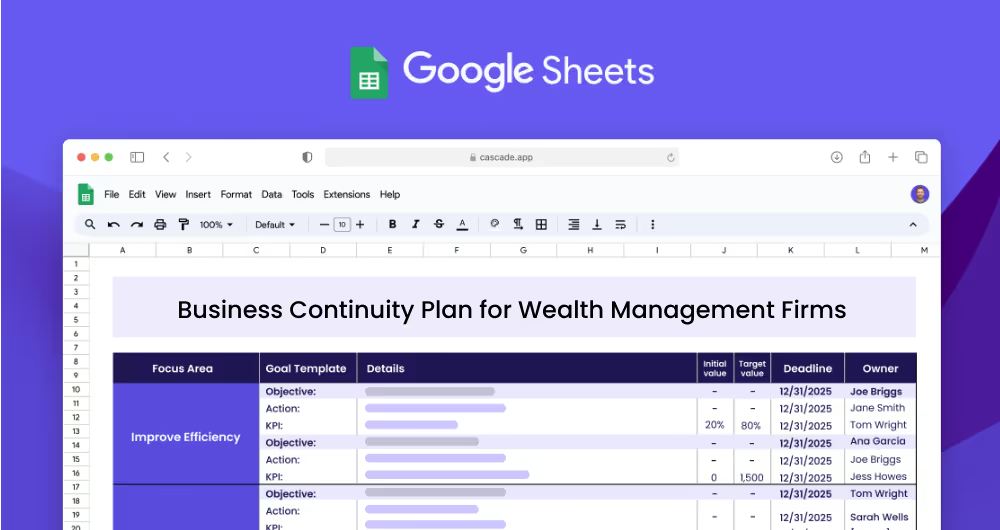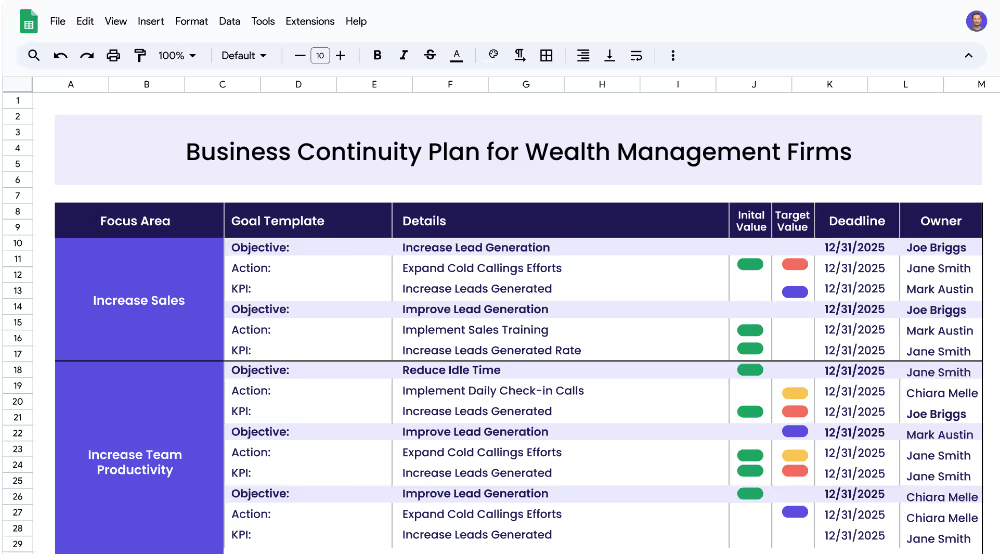A Business Continuity Plan (BCP) for wealth management firms is a plan that outlines how the organization will maintain operations during times of crisis or unforeseen events. It is critical for financial advisors, investment companies and other wealth management firms to have a plan in place as it ensures the continuity of client services, portfolio management, and financial operations. A BCP should include a comprehensive risk assessment of the organization’s critical functions, a clear plan for the continuity of those functions, and a strategy for recovery of those functions when the event is over.
Each focus area has its own objectives, projects, and KPIs to ensure that the strategy is comprehensive and effective.
This template is designed to help wealth management firms, financial advisors, and investment companies create a comprehensive Business Continuity Plan that outlines how they will maintain operations during times of crisis or unforeseen events. It includes clear objectives and measurable targets (KPIs) that can be used to track progress and ensure that the plan is effective. Additionally, it includes actionable projects that can be implemented to achieve the desired outcomes.
When creating a Business Continuity Plan, it is important to begin by defining clear focus areas. Focus areas are the overarching goal of the plan and should be specific and measurable. Examples of focus areas for a wealth management firm could include increasing operational resilience, data security, or available resources.
Once you have identified the focus areas of your Business Continuity Plan, you should then identify specific objectives that will help you achieve those focus areas. Objectives should be specific, measurable, and achievable. Examples of some objectives for the focus area of Increase Operational Resilience could be: Establish Business Continuity Plan, and Establish Communication Protocols.
Once you have identified objectives that will help you achieve your focus areas, you should then set measurable targets (KPIs) to track progress towards each objective. KPIs should be specific and measurable. An example of a KPI for the focus area of Increase Operational Resilience could be: Ensure 100% coverage of operational contingencies.
Once you have identified the KPIs that will help you track progress towards your objectives, you should then identify related projects that can be implemented to achieve the desired outcomes. Projects should be actionable and achievable. For example, under the KPI of ensuring 100% coverage of operational contingencies, an actionable project could be to create a plan for operational continuity.
If you’re ready to accelerate your strategy and see faster results, Cascade Strategy Execution Software provides a powerful platform designed to enhance strategic planning, execution, and tracking. Unlike traditional spreadsheets that can limit visibility and slow down adaptations to your strategy, Cascade offers a dynamic and integrated solution. It ensures real-time updates, centralized collaboration, and automated reporting capabilities. Sign-up for free or book a demo with one of our strategy experts to optimize your business continuity strategy today!


